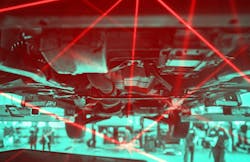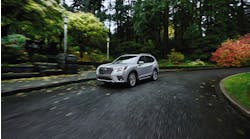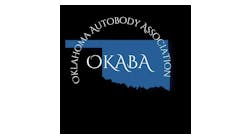In the old days, Bruce Hoecker says, measuring vehicle damage at body shops was akin to taking a geometry test. A pen, notepad, and even a tape measure were required.
In 2018, only the top technology will do.
“Twenty-five years ago, a lot of stuff was not nearly as precise as what it is today, and what it needs to be,” says Hoecker, the collision center manager for Riley Toyota and Riley Chevrolet Buick GMC, in Jefferson City, Mo. “Today, the computerized measuring systems … will measure to the millimeter.”
Not that long ago, Hoecker’s collision repair staff was used a mechanical measuring system, which opened the facility up to the potential for a host of human errors that could result in costly delays on repairs. That left Hoecker uneasy.
Hoecker also wanted the entire measuring process to be as safe as possible for employees—even if the investment stung a bit initially.
Lagging Behind
The adage “time waits for no one” felt quite accurate to Hoecker earlier this decade. After all, by that point, he had grown weary of watching his technicians fumble their way through procedures for measuring vehicle damage.
“It was just a long amount of time,” Hoecker notes of the mechanical measuring, with the “possibility for human error.”
And, not only was that antiquated measurement process tedious, but Riley also was saddled with a frame machine that was on its last legs—not an ideal scenario for a 25,000-square-foot shop that had an average monthly car count of 140. That machine made employee safety a growing concern.
“The old frame machine we had was dated, well used, and past its prime,” Hoecker explains. “So, we started to look toward new equipment.”
Measuring Up
In 2014, Hoecker did exhaustive research, closely examining multiple equipment companies. Eventually, he was sold on purchasing an electronic measuring system, due to the potential for efficiency that it offered.
After getting input from his dealership’s distributor, Hoecker came to a conclusion: The Riley group would invest in two pieces of equipment. First, an impulse-E/VHT frame machine, and a LaserLock 3D electronic measuring system, both from Chief Automotive Technologies.
While the purchases required a significant investment from the shop, Hoecker appreciated both the frame machine’s variable height capabilities and the LaserLock system’s ability to measure multiple points on a vehicle simultaneously.
“So,” Hoecker explains of the electronic measuring system, “if you’re pulling on damage that’s on the front of the car, while you’re pulling you can see that point move on the computer screen … and, at the same time, you can see all the points on the opposite end of the car.
“You don’t have to stop and re-measure to see if you pulled it in the right spot, because you can see it move as you pull.”
Before purchasing the 3D electronic measuring system, the Riley group’s technicians had to toil with pen, paper, and tape measure. Nowadays, things are effortless in comparison. Now, Hoecker notes, all the measuring information that a technician needs appears right before their eyes, on a computer monitor.
In 2018, the Riley group’s overall measuring process is fairly simple: a damaged vehicle gets benched on the frame machine, and then the VIN is plugged into the Chief Automotive Technologies software. Then, a technician will note whether he or she is working on a unibody or frame, and the software will soon provide photos of the mounting points involved. The new software even shows a body shop staffer from which points of the car to hang targets that the software’s laser technology takes readings from. Soon after, the pulling process can begin.
The 3D measuring technology largely eliminates the possibility of human error.
“The technician who’s never used it before may seem intimidated at first,” Hoecker says of the 3D electronic measuring setup. “But after one or two times using it, they can clearly see there’s photos, step for step, to [instruct] them.”
Moving Forward
Thanks to their equipment investment a few years back, the Riley group has enjoyed increased efficiency in recent years. The current process that Hoecker oversees for measuring vehicle damage is far more user friendly, and a lot more precise, than what he witnessed early this decade.
Simply put, the new process provides peace of mind for Hoecker, whose collision repair center currently boasts a CSI score of 96 percent.
The electronic measuring system, “was able to give us computerized printouts before we did the pull, to show the damage on the car,” Hoecker explains. “So, these sheets were good documentation to the insurance company to show them … how far the frame was off. And, on that sheet you put the vehicle identification number, and it’s dated, time stamped, and you can put the owner’s name, [so] you can go back in the system and recall it at a later date, for more documentation.”
Pens, notepads, and tape measures are largely things of the past in Hoecker’s collision repair center. They have given way to a smoother, electronic measuring process, backed by the current frame rack and 3D measuring system.
“There’s no way that you can operate in today’s world, in my opinion, without these types of equipment … and computerized measuring,” Hoecker says. “It’s documentation that you repaired the car correctly, and repaired it to OEM specifications.”




